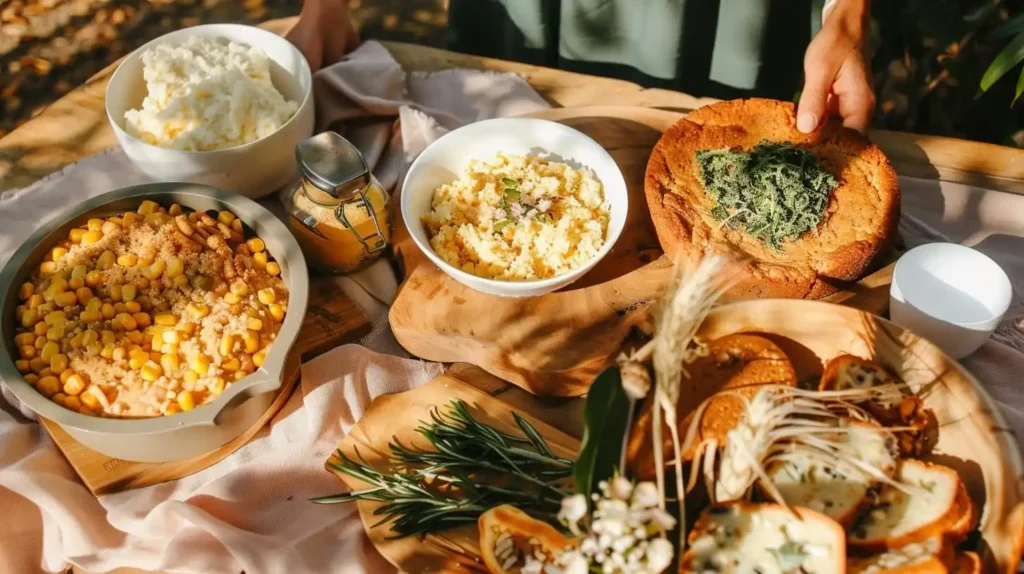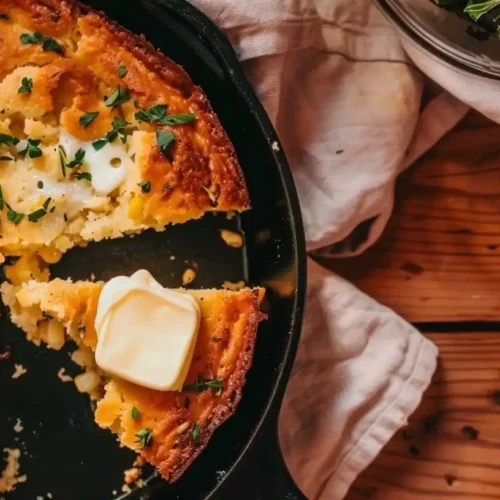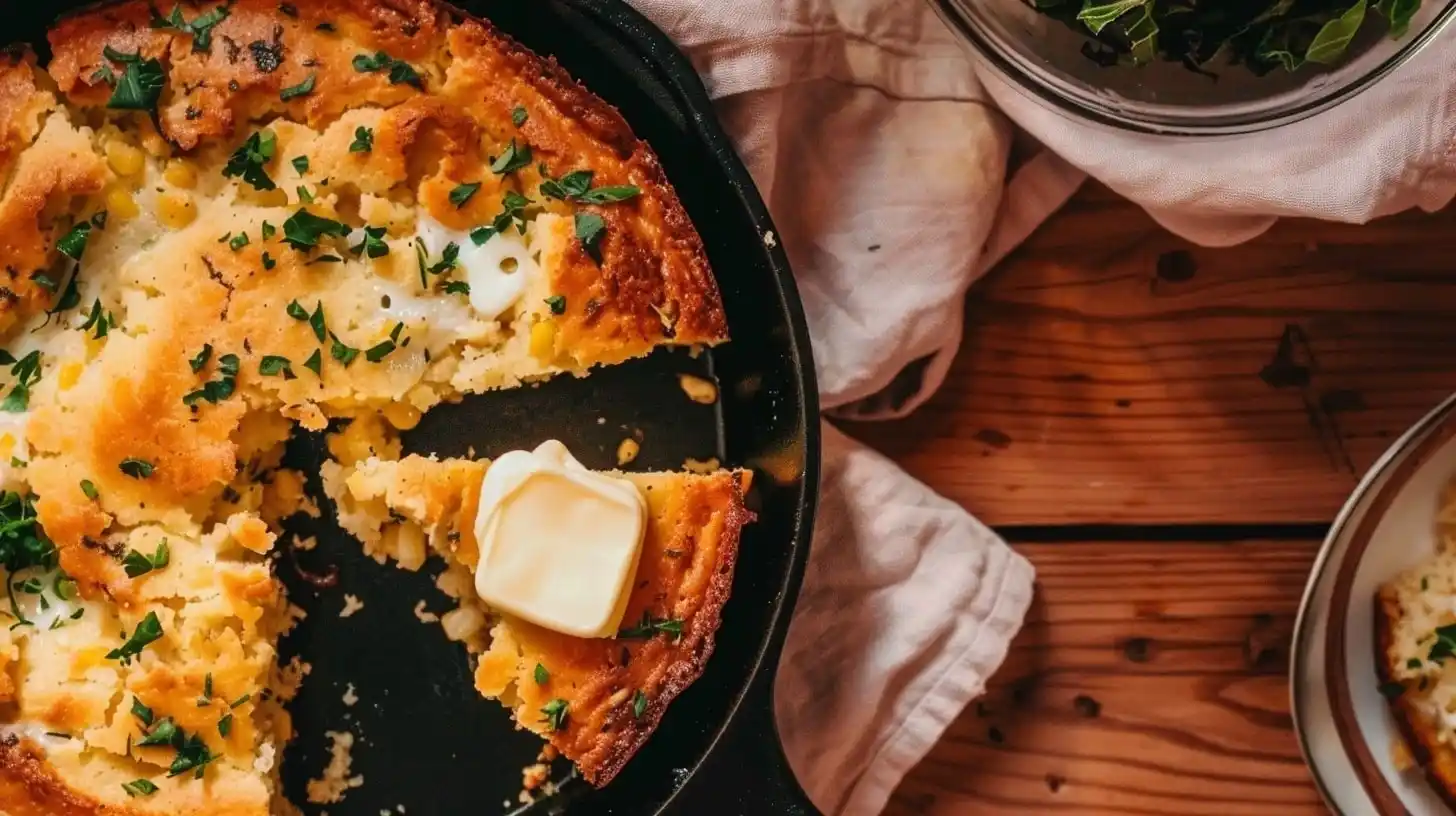My first dinner at my college roommate’s New York home remains eternally memorable—not for the main course, but for what her mother called “cornbread.” When I took a bite expecting the savory, crumbly bread of my Kentucky childhood, I was shocked by its sweet, cake-like texture. “This isn’t cornbread,” I blurted before I could stop myself. My roommate’s family stared at me in confusion while I stumbled to explain that where I come from, cornbread never contains sugar.Why Do Southerners Not Put Sugar in Cornbread?
That moment sparked my first realization that cornbread traditions run as deep as regional identities. My grandmother, who taught me to cook, had passed down not just recipes but cultural values through her cast iron skillet. “Why don’t Southerners put sugar in cornbread?” my roommate later asked. My grandmother’s voice echoed in my head: “Because it ain’t cake, honey.”
Years later, as I teach my own children to cook, I find myself explaining these same traditions—the reasoning behind why Southerners guard their unsweetened cornbread with fierce pride and unwavering commitment.
Table of Contents
The Cultural Significance of Unsweetened Cornbread
Understanding why Southerners don’t put sugar in cornbread reveals much about Southern culinary identity and history. This tradition matters because:
- Cultural authenticity: Unsweetened cornbread represents a direct link to genuine Southern cooking traditions.
- Historical continuity: The recipe has remained largely unchanged for generations, preserving culinary heritage.
- Regional pride: The savory cornbread tradition serves as a point of distinction and Southern identity.
- Flavor integrity: Unsweetened cornbread complements traditional Southern dishes without competing sweetness.
- Cooking philosophy: It reflects the Southern approach to simple, honest food with minimal unnecessary additions.
While my best Southern cornbread recipe adheres strictly to these traditions, understanding the differences between cornbread and Southern cornbread helps appreciate the significance of these regional variations in our cozy breakfast recipes collection.
5 Proud Reasons Why Do Southerners Not Put Sugar in Cornbread?

1. Honoring Agricultural Heritage
Southerners don’t put sugar in cornbread largely because of the region’s historical relationship with corn. In the rural South, corn was a staple crop—essential for survival rather than a sweet treat. Cornbread developed as a practical way to transform this abundant grain into daily sustenance.
“Our ancestors didn’t have sugar to waste on everyday bread,” my grandmother would explain while showing me how to mix the simple batter. “Sugar was expensive and saved for special occasions.” This practical approach to ingredients became codified as tradition, with the pure corn flavor celebrated rather than masked.
When teaching my daughter to make cornbread, I share this history, helping her understand that adding an extra egg to cornbread might be acceptable, but adding sugar crosses an invisible cultural boundary Southerners have maintained for generations.
2. Complementing Southern Cuisine
Southern cuisine features dishes with deeply complex flavors—smoky collard greens with ham hocks, savory beans simmered with salt pork, tangy buttermilk-soaked fried chicken. Southerners don’t put sugar in cornbread because its role in Southern meals is functional—it serves as a complement to these flavorful dishes, not a contrast.
My father would crumble unsweetened cornbread into a glass of buttermilk, creating a humble farmer’s meal. “Sweet cornbread would ruin this,” he’d insist. Similarly, cornbread’s intended purpose of sopping up pot likker (the nutritious liquid from cooked greens) would be undermined by sweetness that would clash with the greens’ complex flavors.
This culinary context explains why Southerners remain steadfast in their commitment to savory cornbread—it’s one piece of a larger, harmonious flavor system.
3. Preserving Authentic Corn Flavor
Perhaps the most fundamental reason Why Do Southerners Not Put Sugar in Cornbread? is their deep appreciation for corn’s natural flavor. Traditional Southern cooking celebrates ingredients’ inherent qualities rather than masking them with sweeteners.
“You should taste the corn itself,” my grandmother would say, “not just sweetness.” This philosophy extends to her insistence on stone-ground cornmeal, which preserves more of the corn’s natural oils and flavor. When making cornbread with my son, I let him smell and taste the cornmeal before cooking, helping him appreciate the ingredient’s natural qualities.
Southern cornbread’s simplicity—cornmeal, buttermilk, fat, leavening—creates a pure platform for corn’s subtle nutty flavor. Adding sugar would obscure this essential characteristic that Southerners have treasured for generations.
4. Maintaining Textural Integrity
Southerners don’t put sugar in cornbread because sugar fundamentally changes cornbread’s texture—transforming it from a crumbly, hearty bread into a more cake-like creation. Traditional Southern cornbread’s texture serves specific purposes in Southern cuisine.
Its crumbly nature means it can be easily crumbled into a bowl of beans or peas, thickening the pot liquor and creating a satisfying texture. The crispy bottom crust—achieved by pouring batter into a sizzling hot cast iron skillet—provides textural contrast that sugar would undermine by promoting more even, cake-like baking.
“Cornbread should have character,” my mother would say, demonstrating how proper cornbread breaks rather than slices cleanly. This textural distinction remains a point of regional pride and practical function.
5. Expressing Cultural Resistance
Perhaps most fascinating is how unsweetened cornbread has become a form of cultural resistance for Southerners—a line in the culinary sand that says, “This is who we are.” In a region whose foodways have often been appropriated or misrepresented, maintaining authentic cornbread traditions represents a small but significant stand for cultural integrity.
My Kentucky-born grandfather would sooner eat no cornbread at all than consume the sweet Northern version. This wasn’t mere stubbornness but a genuine belief that calling sweet cornbread “Southern” misrepresented his culture and heritage. When I prepare traditional cornbread for my children, I’m conscious that I’m passing down not just a recipe but a piece of their cultural identity.
This cultural dimension explains why the sugar debate transcends mere taste preference—it’s about honoring ancestors, regional identity, and culinary authenticity in a changing world.
Respecting Regional Traditions
While this article explains Why Do Southerners Not Put Sugar in Cornbread?, it’s important to acknowledge that Northern cornbread traditions have their own legitimate history and purpose. Neither version is “wrong”—they simply reflect different cultural developments shaped by regional ingredients, economics, and taste preferences.
In my own kitchen, I prepare traditional Southern cornbread when serving classic Southern meals, but I’ve learned to appreciate Northern-style cornbread with certain dishes. This culinary flexibility, however, doesn’t diminish my respect for the deep traditions behind unsweetened Southern cornbread.
Answers to Your Cornbread Questions
Q: Can I adapt Southern cornbread to be slightly sweet without betraying tradition?
Traditional Southerners would say no, but some modern Southern cooks add a teaspoon of sugar—not for sweetness but to enhance browning. This minimal amount doesn’t create sweet cornbread but helps develop a deeper color. My aunt uses this approach, calling it her “little secret.”
Q: Does the type of cornmeal matter for authentic Southern cornbread?
Absolutely. Traditional Southern cornbread ideally uses stone-ground cornmeal, which retains more of the corn’s germ and natural oils. This provides richer corn flavor and coarser texture—another reason why Southerners don’t need sugar to enhance their cornbread.
Q: Is there a compromise version for mixed-region families?
My husband, raised on Northern cornbread, and I developed what we call “Mason-Dixon Cornbread” for our children—using stone-ground cornmeal and a cast iron skillet like Southern tradition, but adding just one tablespoon of sugar. It’s not fully Southern, but it respects the fundamental principles while bridging regional differences.
I hope these insights help you understand Why Do Southerners Not Put Sugar in Cornbread?—a tradition reflecting history, practicality, and cultural identity. Which cornbread tradition does your family follow?
With warmth, Sophia

Authentic Southern Cornbread (No Sugar)
Ingredients
- 2 cups stone-ground cornmeal (white or yellow)
- 1/2 cup all-purpose flour
- 1 teaspoon baking powder
- 1/2 teaspoon baking soda
- 1 teaspoon salt
- 2 large eggs
- 1 1/2 cups buttermilk
- 1/4 cup bacon drippings or melted butter
- 2 tablespoons bacon drippings or butter for the skillet
Instructions
- Place a 10-inch cast iron skillet in the oven and preheat to 450°F.
- In a large bowl, whisk together cornmeal, flour, baking powder, baking soda, and salt.
- In a separate bowl, beat the eggs lightly, then whisk in the buttermilk and 1/4 cup bacon drippings or butter.
- Make a well in the center of the dry ingredients and pour in the wet ingredients. Stir just until combined – do not overmix.
- Carefully remove the hot skillet from the oven. Add 2 tablespoons bacon drippings or butter and swirl to coat the bottom and sides of the skillet.
- Pour the batter into the hot skillet – it should sizzle as it hits the pan.
- Return the skillet to the oven and bake for 20-25 minutes, until golden brown and a toothpick inserted in the center comes out clean.
- Allow to cool in the skillet for 5 minutes before cutting into wedges and serving.

